Capital Art
By ahsan | Art | Arts & Culture | Published 14 years ago
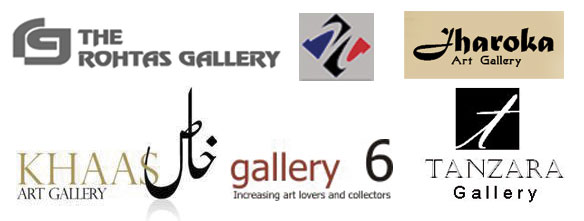
Islamabad is viewed by most as an artificial city created for and by the bureaucracy. It is a city of bureaucrats and diplomats — and of foreign aid agencies.
But all that is changing gradually as more families move from the crowded urban centres like Karachi and Lahore to Islamabad in search of a clean, green atmosphere. Shopping malls are coming up. Eating places are opening up. And the art and culture scene has revved up.
Islamabad now boasts a thriving art market, well-run art galleries and dedicated art lovers. Exhibitions, lectures, seminars and book launches are well attended. The Pakistan National Art Gallery at the PNCA holds art exhibitions regularly and has an impressive permanent collection and a museum gift shop well stocked with the country’s arts and crafts.
Also forming part of the art landscape are the private art galleries. Architect Naeem Pasha’s Rohtas is the oldest private art gallery. Nomad, run by activist Nageen Hyat, is an art gallery with a well-stocked arts and crafts centre that is extremely popular for Christmas/gift shopping. Khaas, a gallery-cum-café managed by Zishan Afzal Khan, a.k.a. ‘Mousie’ and Toni Moin, is one of the most popular power lunch venues. Jharoka Art gallery is owned by the artist Nahida Raza, and Gallery 6 by a doctor, Arjumand Faisel. And then there is Noshi Qadir’s immensely successful Tanzara gallery.
Newsline takes you to the capital’s art market and introduces you to the men and women behind it.
When did you establish your gallery?
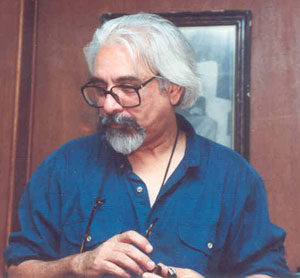 Naeem Pasha: Rohtas is the oldest private gallery in Rawalpindi/Islamabad. Established in 1981, Shoaib Hashmi named it after the Rohtas Fort, near Jhelum. Before us, during Ayub Khan’s time, there was a contemporary art gallery run by Zubeida Agha, in the Murree Brewery area. It closed down in the early ’70s and she gave the whole collection to PNCA — the sole art gallery at that time.
Naeem Pasha: Rohtas is the oldest private gallery in Rawalpindi/Islamabad. Established in 1981, Shoaib Hashmi named it after the Rohtas Fort, near Jhelum. Before us, during Ayub Khan’s time, there was a contemporary art gallery run by Zubeida Agha, in the Murree Brewery area. It closed down in the early ’70s and she gave the whole collection to PNCA — the sole art gallery at that time.
During General Zia’s tenure, a national exhibition was held, where the culture secretary, Masood Nabi Noor, borrowed two priceless Chughtai paintings from Faiz Sahib for an exhibition in the US, but never returned them. Alys Faiz used to call him Masood Nabi ‘Soor’ and she fought, unsuccessfully, for years to get the paintings back.
Incidentally, whenever Zia came for the opening of an exhibition, PNCA would hide certain paintings, especially abstract art or semi-nudes, and those by Zahoor-ul-Ikhlaq and Salima Hashmi.
I had always wanted to open a gallery which would be a prelude to my architecture practice and Salima Hashmi and I decided to show art that the establishment would not allow. We wanted to feature young artists. Nazish Ataullah, Afshar Malik, Anwer Saeed and Quddus Mirza all got British Council scholarships after their work was exhibited at Rohtas in Lahore (2001) and Islamabad. We have held around 250 exhibitions, featured 17 foreign artists including Spanish, Portuguese, American, Swiss and South African. We’ve hosted luminaries such as Peter Daglish and Bartolomeo Dos Santos — the head of the Slade School of Art.
Nageen Hyat: Nomad was established in 1984 as a private voluntary organisation, and is committed to promoting arts, culture and crafts in Pakistan — under the umbrella of human rights and peace. We have held over 200 exhibitions of renowned and emerging, national and international artists, of which 100 artists continue to be regularly represented by us. The centre also works with various individuals and a large number of organisations from all provinces of Pakistan, producing handicrafts to showcase the best of Pakistan. During these years, and as part of the centre’s regular community-related and philanthropic efforts, Nomad also organised crafts-based skill training workshops for women and youth and we have been working closely with the Saidpur Village residents and various other communities.
Based on the calibre of our work and the trust and image built over the decades, the CDA has allocated Nomad premises in the new art and crafts village project at Saidpur.
In addition, Nomad has a commitment to humanitarian response that deals with disasters and emergency situations; we organised a fund-raiser for the earthquake survivors in Azad Kashmir, and have been working closely with the Internally Displaced Persons (IDPs) of Swat, including conducting art therapy/trauma counselling workshops and providing medical camps and rations for families.
Shanaakht — A Nomad Forum for the Arts — is a voluntary group involved in fund-raising, art workshops, film screenings, talks/presentations and offers a platform for fledging artists, poets and writers. I am the executive producer of Shanaakht — mein houn zindagi, a 13-episode series launched this year by Pakistan Television Corporation, focusing on women, professions, culture and taboos. The series has been aired in Pakistan and abroad, as has a documentary called Rediscovering Greater Chitral, on the culture, music, festivals and lifestyle of the people of Chitral and Kalash valleys in northern Pakistan.
Zishan Afzal Khan: Khaas Art has its origins in The Art Gallery, which was established in 1992 by the well-known artist Mobina Zuberi. I joined her in 1997 as a partner. In 2002, The Art Gallery evolved into Khaas Art in a new, purpose-built space designed by architect and gallery owner, Naeem Pasha. We added a gallery café, which has been very successful and is run by my partner Toni Moin. In 2006, Mobina gave up her interest in Khaas Art to pursue a full-time career in painting, although she still interacts and exhibits with the gallery.
The combination of an art gallery with a café has worked out very well. Although the spaces are distinct, it has ensured that the art is viewed even after the opening of an exhibition. This has not always translated into walk-in clients, but has certainly increased our viewership and is less intimidating to the first time or casual buyer.
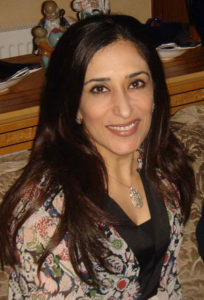 Noshi Qadir: Having been an art enthusiast all my life, I knew it was only a matter of time before I embarked on a venture to help promote the arts in a more meaningful way. Opening an art gallery in Islamabad provided me with just the right opportunity. Tanzara Gallery was established in 2007. The name is a combination of my daughters’ names — Tanya and Zara.
Noshi Qadir: Having been an art enthusiast all my life, I knew it was only a matter of time before I embarked on a venture to help promote the arts in a more meaningful way. Opening an art gallery in Islamabad provided me with just the right opportunity. Tanzara Gallery was established in 2007. The name is a combination of my daughters’ names — Tanya and Zara.
Nahida Raza: Jharoka Art gallery opened three years back, and as its name implies, it provides a ‘window’ to art. I am an artist myself and I wanted to share, promote and encourage new artists in the capital.
Dr Arjumand Faisel: I’m a medical doctor but art is my passion. I grew up in Karachi, and artists such as Jamil Naqsh, Bashir Mirza, Ali Imam and Ahmed Parvez lived within walking distance from our house. Sadequain would come over to our house. Rashid Arshad became a mentor to me, as did Ali Imam. There would be gatherings at Ali Imam’s place, three times a week, where I would sit at the back and listen to the artists critiquing, not criticising, other artists’ work. I learned a lot and went to all the exhibitions at Ali Imam’s Indus Gallery. When he saw that I was interested in art, he would ask me which painting I thought was good and why. Then he would correct me and point out things I hadn’t noticed. Earlier, I had been working in public health, but now I dedicate my time to running the gallery with my son Usama Arjumand, who has just returned from the UK with a degree in Design Engineering from Nottingham University. My wife Samina Arjumand is a ceramist. My daughter Sana is an artist with a degree in Fine Arts from NCA Lahore. We are an artistic family!
The gallery was established in March 2008 and to date has held 21 exhibitions at the premises and two at PC Bhurban. When people ask me why the name Gallery 6, I tell them that ours is the sixth gallery in the private sector of Islamabad. Rohtas, Khaas, Nomad, Tanzara and Jharoka were present before us. However the real reason is that the number 6 has brought success in my life.
We invite people that we know have never been to an art gallery to each exhibition. I call them personally, I insist they come. One guy who had never been to an art gallery has become such a genuine lover and a buyer, that he even called up to say that he couldn’t attend the opening of an exhibition because he was attending a funeral outside Islamabad.
There is a community service aspect to my gallery as well. I make presentations about Pakistani art to children of government schools, who are never exposed to art. These children really respond to the presentations and ask such interesting questions. We also get students from the art schools to have interactive sessions with the artists.
How has the art market changed since you first started? What is the effect of the current economic downturn on the market?
Naeem Pasha: Everything has changed. But art has finally arrived in Pakistan and now an artist can make a living out of his/her work. Although there are fewer buyers, art is more expensive these days.
 Nageen Hyat: It is now crucial for Nomad to have a permanent space in Islamabad since the cost of rented houses/outlets is very high. We are working towards creating links and partnerships through requests for donor support to set up the Nomad Cultural Centre which would include space for training workshops, an arts and crafts gallery and a small auditorium for screening of documentaries and performances.
Nageen Hyat: It is now crucial for Nomad to have a permanent space in Islamabad since the cost of rented houses/outlets is very high. We are working towards creating links and partnerships through requests for donor support to set up the Nomad Cultural Centre which would include space for training workshops, an arts and crafts gallery and a small auditorium for screening of documentaries and performances.
The market has changed tremendously over the years due to socio-political issues and rampant religious bigotry. Socially-conscious artists have responded to their difficult and restraining environment, but others have simply shrugged off these interventions and continue to churn out commercially viable art.
The economic downturn has created some interesting effects. Buyers are either investing in the works of young, emerging artists or in high-end purchases by recognised artists which has created a backlash for mid-level, struggling artists. Various artists and buyers talk about plagiarised work selling through some commercial galleries in Lahore and Karachi as well.
Zishan Afzal Khan: Well, for one, Pakistani contemporary art has really taken off in the last decade. This has certainly been a boon for me, as this is what interests me personally.
In the last few years we have been able to exhibit and promote ground-breaking art to a new type of art collector — one that is interested in the art of today. Purely decorative traditionalist art is not our focus or our interest, and our buyers embrace innovation and eschew the conventional.
Fiscal issues are always reflected in areas like art, so yes, of course it has taken a toll. However, we soldier on!
Noshi Qadir: About a decade ago, the art market in Pakistan was in its embryonic stage. Great strides have been taken to bring international recognition to both the artists and local galleries and in developing a local collectors’ base.
The art market all over the world has taken a hit during the economic downturn. However, in Pakistan art prices have been comparativly low so we really haven’t felt the pinch here. Things slowed down for a while but now we are again selling at the same pace.
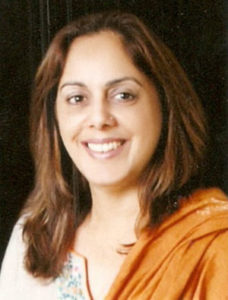 Nahida Raza: Three years back the market for art was flourishing and due to a good response from buyers, artists were content. But now things have changed. The market has declined because of many external factors. It all depends upon the overall economic situation.
Nahida Raza: Three years back the market for art was flourishing and due to a good response from buyers, artists were content. But now things have changed. The market has declined because of many external factors. It all depends upon the overall economic situation.
Dr Arjumand Faisel: Sales dipped significantly in 2009 due to political instability and economic recession, but the graph is picking up again. There has been a noticeable shift in buyers as many ambassadors have stopped visiting the gallery, especially after the Marriott bombing. However, our focus has been on local buyers and we continue to work with them. We have been exhibiting works of those artists who are not geared towards market trends. So far we have been successful in introducing several new artists to art lovers and collectors.
Is Islamabad a unique market compared to Karachi and Lahore?
Naeem Pasha: Islamabad is more of diplomats, baboos, bureaucrats but no industrialists — no money-making machines. This is not the case in Karachi or Lahore. Additionally, Indians and Europeans are buying Pakistani art because compared to India, art still has manageable prices here.
Nageen Hyat: Islamabad is unique to the effect that the gallery visitors and buyers are local and multicultural, with an understanding of art, since the international agencies and diplomatic missions are situated here. Karachi and Lahore are busier, commercial cities.
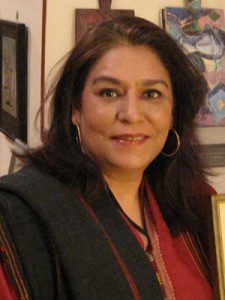 Zishan Afzal Khan: Yes and no. Islamabad is a unique market in that the clientele is small and tightly knit. However, it is a dedicated clientele and very open to innovation. The artists community here is also very limited but, with the opening of a branch of the National College of Arts, this is set to change. The first thesis show held by the NCA Pindi was delightful. I am very encouraged by it.
Zishan Afzal Khan: Yes and no. Islamabad is a unique market in that the clientele is small and tightly knit. However, it is a dedicated clientele and very open to innovation. The artists community here is also very limited but, with the opening of a branch of the National College of Arts, this is set to change. The first thesis show held by the NCA Pindi was delightful. I am very encouraged by it.
Noshi Qadir: It’s not really different to Karachi or Lahore. We have the diplomatic community here, but they only make up 10- 20% of our clientele. It is a smaller market here, but a good one.
Nahida Raza: Yes, because the opportunities are limited and the market is very small with reasonable competition among the galleries. The buyers are mostly foreigners and a limited group of art lovers. The business is very slow compared to Karachi and Lahore.
Dr Arjumand Faisel: Lahore and Karachi have the leading businessmen and industrialists of the country; also, the headquarters of banks and other leading industries are also located in these two cities. Art galleries in Islamabad do not have that large corporate sector to focus on for sales. Another important difference is that in Karachi, abstract and modern contemporary art is more appreciated and purchased, while in Islamabad the buyer is looking for skill, realism or aesthetics.
What does the future hold? What are your concerns vis-a-vis?
Nageen Hyat: Our concerns are manifold. Violence and extremism has permeated our society. The plight of our people and the socio-political scenario that exists is volatile and depressing. The lack of a viable middle class has created a wider gap between people surviving below the poverty line and those who have acquired wealth at their cost. Art, used sensitively and effectively, is an important tool for activism, peace and social change.
Zishan Afzal Khan: Khaas Art was founded on a deep commitment to the concept of art in its many forms. It has grown not just because of a passion, but also through an enduring belief in the positive impact of art and culture on society and people — an influence that is both humanising and insightful. We aim to exhibit and promote art that represents the zeitgeist of today, so that we better understand our present and embrace our tomorrows. This is the ethos and primary identity of Khaas Art.
We, are committed to making the viewing and collecting of art pleasurable and accessible to all. The Gallery’s repertoire of work — whilst concentrating on the more avant garde, the more innovative and the more experimental — includes an array of contemporary painting, drawing, printmaking, sculpture, photography, installation and video art. Since opening in its current premises, Khaas Art has inevitably been the gallery that artists have naturally gravitated towards. We have held a series of ground-breaking and cutting-edge shows and provided a platform for many young artists who are now recognised and highly collectible.
Noshi Qadir: I want to promote visions that are unique to the artist. The gallery intends to continue displaying high quality art — paintings, sculptures, ceramics and photography. We stress on quality over quantity so the high standards that the gallery has set for itself are maintained. The number of exhibits may be fewer, but excellence will not be compromised on.
Nahida Raza: The art scene is definitely better since the last decade. People are more aware and conscious about art and art activities. I have been in this field for a long time and now I have ample experience so I have also started holding art classes in my gallery. I hope the art scene will get better again when the dust settles.
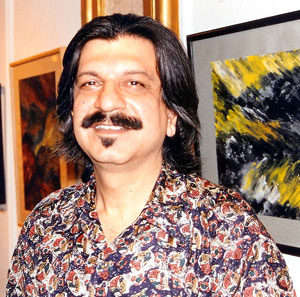 Dr Arjumand Faisel: We have actively tried to increase the number of art lovers and have succeeded in doing so. A number of our regular visitors and buyers are those who had never visited an art gallery in their life. On the exhibition’s opening day, walk-throughs and artist talks have proved to be valuable in disseminating knowledge about art among new art lovers. This has also created interest among art students to visit the gallery frequently as they enjoy interacting with the artists. We have arranged visits of art students from FC college and NCA, especially during the exhibitions of senior artists from other cities, to hold exclusive art sessions for them.
Dr Arjumand Faisel: We have actively tried to increase the number of art lovers and have succeeded in doing so. A number of our regular visitors and buyers are those who had never visited an art gallery in their life. On the exhibition’s opening day, walk-throughs and artist talks have proved to be valuable in disseminating knowledge about art among new art lovers. This has also created interest among art students to visit the gallery frequently as they enjoy interacting with the artists. We have arranged visits of art students from FC college and NCA, especially during the exhibitions of senior artists from other cities, to hold exclusive art sessions for them.
Is there a specific kind of art that you show, or don’t show?
Naeem Pasha: We stopped showing calligraphy, and picturesque, insipid landscapes that ‘lady wives’ wanted to buy to match their sofas or curtains, or even crayons of old gardeners that expats would take back as a ‘flavour of Pakistan’ souvenir.
Zishan Afzal Khan: Khaas Art deals in contemporary art and the contemporary art gallery is a wholly different entity to the traditional art gallery, both in its philosophy and in its methodology. Whilst a traditional art gallery focuses on artists whose works have proven to be a commercial success and are immediately saleable, the contemporary art gallery is largely delving into the unknown, with a view to the future. This results in an eye for innovation and break-through “edgy” art. Consequently, the clientele of a contemporary art gallery is more open-minded and experimental and, as a result, less willing to settle for the established or the conventional.
Nahida Raza: Any kind of art, which is strong enough to exhibit, I do not hesitate to show it.
Dr Arjumand Faisel: We do not show art which is not original, decorative, done only in response to the market and is repetitive. What we exhibit is creativity and originality. I go and actively seek out artists who are painting but haven’t reached the mainstream. We have not focused on those who are only producing work to sell and compromising the quality of art and their creative skills.


